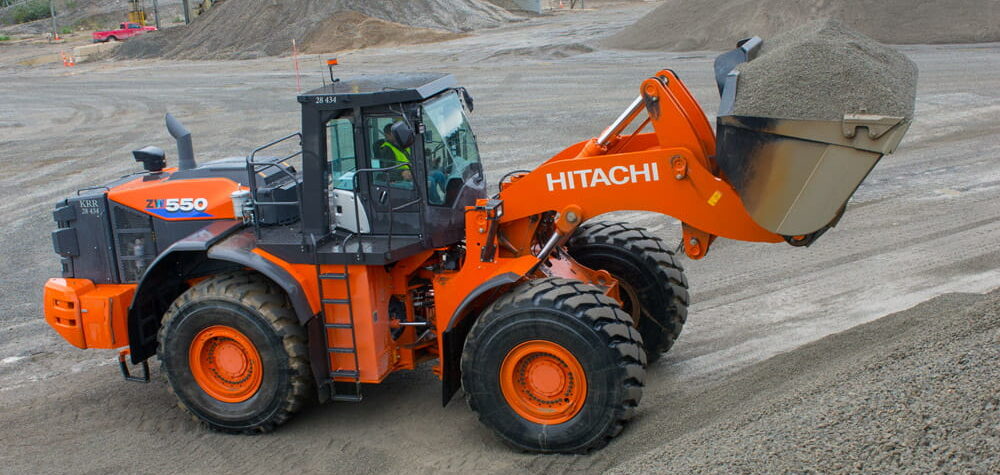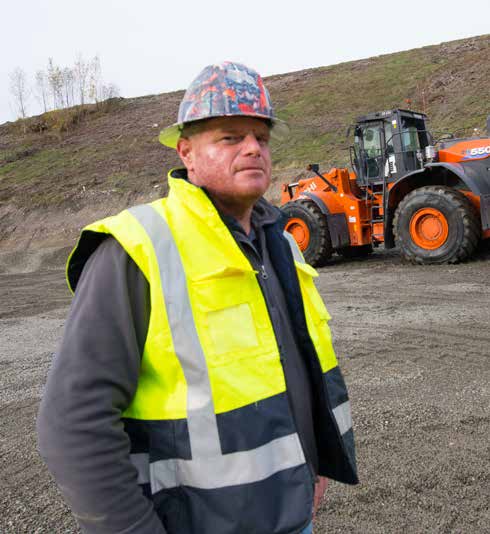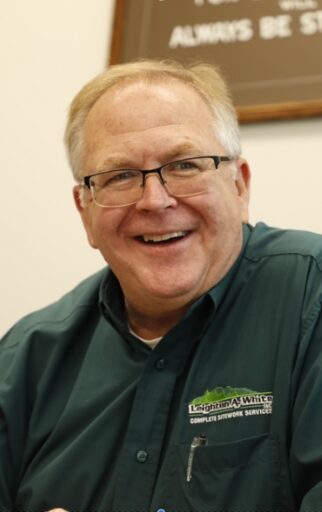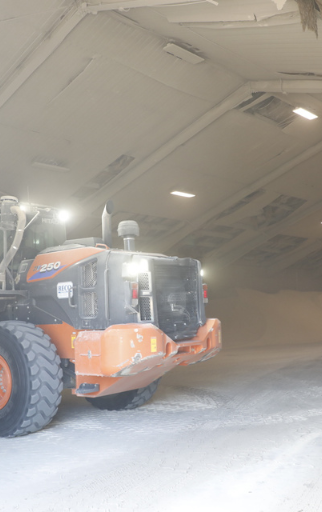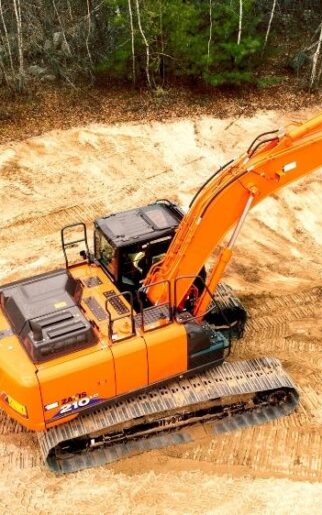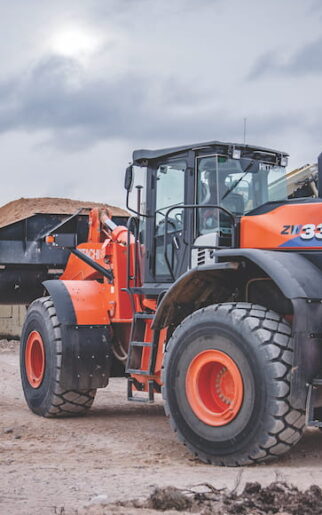If there’s a large infrastructure project in the greater Seattle area, chances are Gary Merlino Construction Co. (GMCC) is involved. One of the Puget Sound region’s largest locally owned heavy civil construction contractors, GMCC helped create the third runway at Seattle-Tacoma International Airport, rebuilt and expanded portions of major interstates and other key area highways and contributed to the revitalization of Seattle’s waterfront by rebuilding the street corridor once overshadowed by the now-demolished Alaskan Way Viaduct. And that’s in addition to a large volume of private-sector work for clients such as Boeing and other major regional employers.
“It’s that kind of diversity that helps us stay in balance with economic changes,” explains Ralph Lo Priore, the company’s Fleet Asset Manager.
We’ve always liked how Hitachi machines have performed. They always use top-quality components, and the engines are bullet-proof. The machines don’t have to be coddled to stand the test of time.
Such accomplishments would be impressive for any contractor, but even more so for one that, according to company history, began humbly in 1961 with just a wheelbarrow, a few hand tools and the commitment of brothers Gary and Don Merlino to hard work and excellent customer service. Now in their 80s, both brothers remain active in the day-to-day operations of a firm that boasts approximately 450 employees, a large fleet of trucks and equipment that Lo Priore estimates is worth approximately around $400 million and the capability to self-perform more than 85% of its projects.
GMCC also supplies aggregate and concrete products to other contractors, the result of its 1985 purchase of long-time Seattle-area ready-mix specialist Stoneway Concrete. Lo Priore says the combined companies generate $200 million of business annually.
A rigorous equipment evaluation process
Lo Priore, who began his career with the company as a mechanic more than 30 years ago, characterizes himself as “passionate” about construction equipment. Along with being intimately familiar with their operation and capabilities, he firmly believes these assets must be managed wisely throughout their life cycle, beginning with making informed product evaluations and buying decisions.
“We can’t afford to continually right-size our fleet,” he explains. “That’s why we consistently apply what I call the ‘Merlino-Stoneway recipe’ for identifying equipment.”
Rather than focusing solely on size or price, Lo Priore says this equipment purchasing approach looks at the whole picture—what the machine will be doing, the kind of material it’ll be moving, the characteristics of job sites it’ll be working at, and so forth.
Scott Cunningham, who represents Columbia Western Machinery in the state of Washington, says there are other factors contractors like GMCC have to consider. “We deal with a lot of rain and mud nine months out of the year, so it is important that we equip machines with safety features that accommodate for that,” he says. “There is also a lot of ground rock, so it’s important that machines are fitted with the right bucket based on area conditions.”
Digging deeper
Then there are the specific needs of GMCC and Stoneway, which Lo Priore says differ from those of their peer competitors, both in the type of projects and materials being moved and in the skill of the company operators.
“There’s a big difference in ownership costs and operating costs, which is often dependent on who’s at the controls,” he explains. “I’ve seen plenty of examples of a machine put to work on an application it’s not designed for. That will have an effect on time, cost and productivity, as well as the machine’s ultimate resale value.”
The same principle holds true for maintenance, as machine applications, operator habits and any number of other factors can affect the timing of everything from fluid changes to resale and replacement.
“Machines ‘age out,’ but they don’t always ‘hour-out,’” Lo Priore says. “You’re taking a big risk if you simply go ‘by the book’ and rely solely on standard maintenance schedules, because they don’t always reflect reality. I’d much rather periodically analyze a machine’s engine oil sample, for example, than just wait for a certain number of hours to tick by.”
Telematics can be a valuable source of information for fleet management, Lo Priore adds, but only if one truly digs into the numbers and what they mean.
“When you rely too much on technology, you have no idea if something bad is on the verge of happening,” Lo Priore says. Using that technology to identify trends and patterns, however, can be very helpful. For example, telematics data was instrumental in identifying an operator who was riding the brake on a machine, a habit that was sure to cause premature wear to the brakes and differential.
“Instead, we helped the operator correct how he ran the machine, which benefitted him as well as the company,” he says.
Lo Priore’s approach may sound strict, but it’s one that he says helps safeguard the Merlino organization’s operational budgets and ability to reliably serve customers.
“Anyone can get the work done, but how often do they have to come back and correct mistakes?” he asks. “Customers rely on us to meet cost and schedule estimates, so we need to know that the machines will be there and perform as expected. So when I buy, I’m confident it will do what we want.”
Putting machines to the test
Hitachi is among the equipment brands that Lo Priore says has consistently met GMCC and Stoneway’s exacting standards for several decades.
“There’s obviously a lot of well-built equipment out there, but we’ve always liked how Hitachi machines have performed,” he says. “They always use top-quality components, and the engines are bulletproof. The machines don’t have to be coddled to stand the test of time.”
Even with the long, positive experience with Hitachi equipment, Lo Priore put the Merlino organization’s latest purchase, a ZW550-6 wheel loader from Columbia Western, through its paces.
“I ran the data and learned everything about it—cost, capacity, productivity, maintenance and so forth,” Lo Priore says of the ZW550, which he describes as a “tweener” size machine that offers the advantage of easy mobility and fuel economy.
“We put a guy who’d never run a 550 in the cab, and he was up to speed in a few hours,” Lo Priore says. “the platform is very simple to understand, making it easy to be successful as an operator.”
Lo Priore also praises Hitachi’s “dependable platform” that offers helpful features without overwhelming operators with options. “Sometimes, manufacturers put too much emphasis on technology,” he explains, adding that a more basic platform is often better suited for helping operators learn how to get the most from a machine.
“We put a guy who’d never run a 550 in the cab, and he was up to speed in a few hours,” Lo Priore says. “The platform is very simple to understand, making it easy to be successful as an operator.”
To complement his familiarity with the GMCC and Stoneway fleet, Lo Priore has welcomed the support from Columbia Western, which opened in 2019. “I’ve known the owners for a long time and was happy when they told me they were going to be a Hitachi dealer,” he says. “They’ll try to help us out with issues over the phone rather than make us wait for a service call.”
Cunningham says the fact that the company’s owners are construction industry veterans provides a deeper appreciation of the kind of support customers need.
“We ask a lot of our customers to trust a new company and trust our product when they decide to use it,” Cunningham says. “In turn, we strive to provide the prompt service when it’s needed it in order to keep their machines and businesses running smoothly.”
Coping with an uncertain future
While the Merlino organization’s stringent demands for equipment are by no means new, they have never been more important. As the Merlino brothers chart the course of their companies’ future for the next 20 years, they need to be sure they can capitalize on the Seattle market’s bounty of promising opportunities while also staying ahead of what is sure to be more intense competition. There’s also the prospect of new state and federal regulations to supplement the recent evolution to Tier 4 emissions standards.
And as with most other firms in the construction industry, the pool of experienced help to do those jobs continues to shrink. Along with equipment operators and tradespeople, workers skilled in equipment maintenance are also becoming hard to find.
Lo Priore worries that the current work-force lacks the mechanical aptitude that earlier generations possessed. “You don’t always need a master mechanic to fix things,” he says, “but it’s helpful to at least know the basics of how machines function in certain applications and how to care for them. The challenge for us is to try and help make people think about equipment the same way we do.”
Relying on fundamentals such as the “Merlino-Stoneway recipe” will help the companies stay in the forefront of Seattle’s construction industry.
“We may ask for a lot from our fleet,” Lo Priore says, “but we’ve reached a point where customers expect a lot from us. We’re not about to let them down.”

